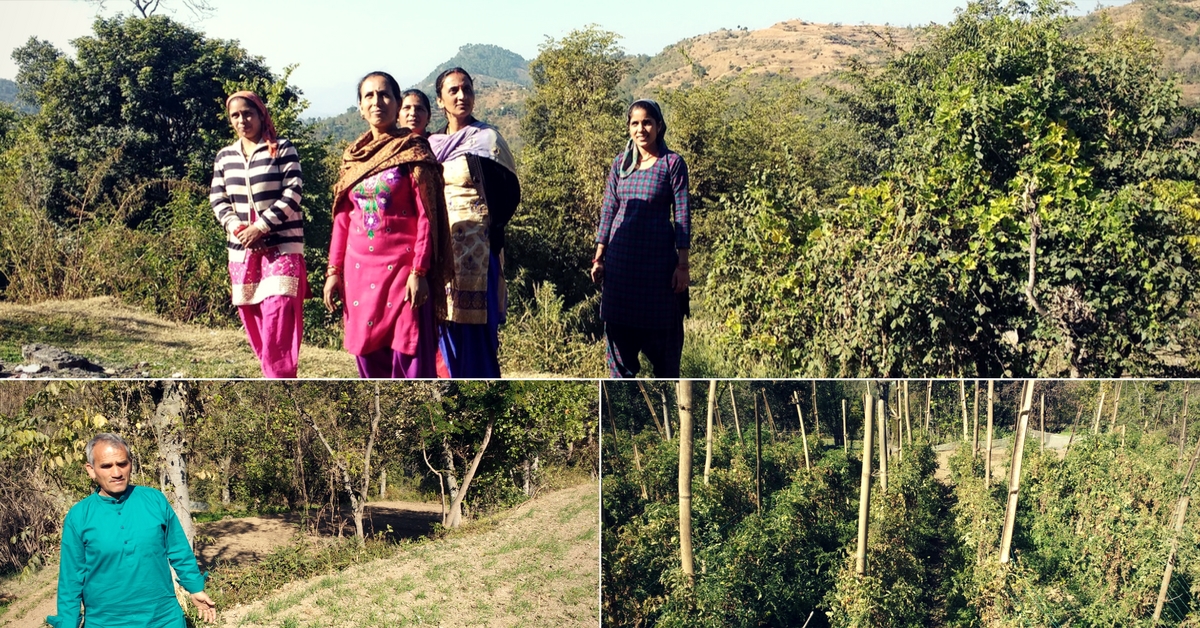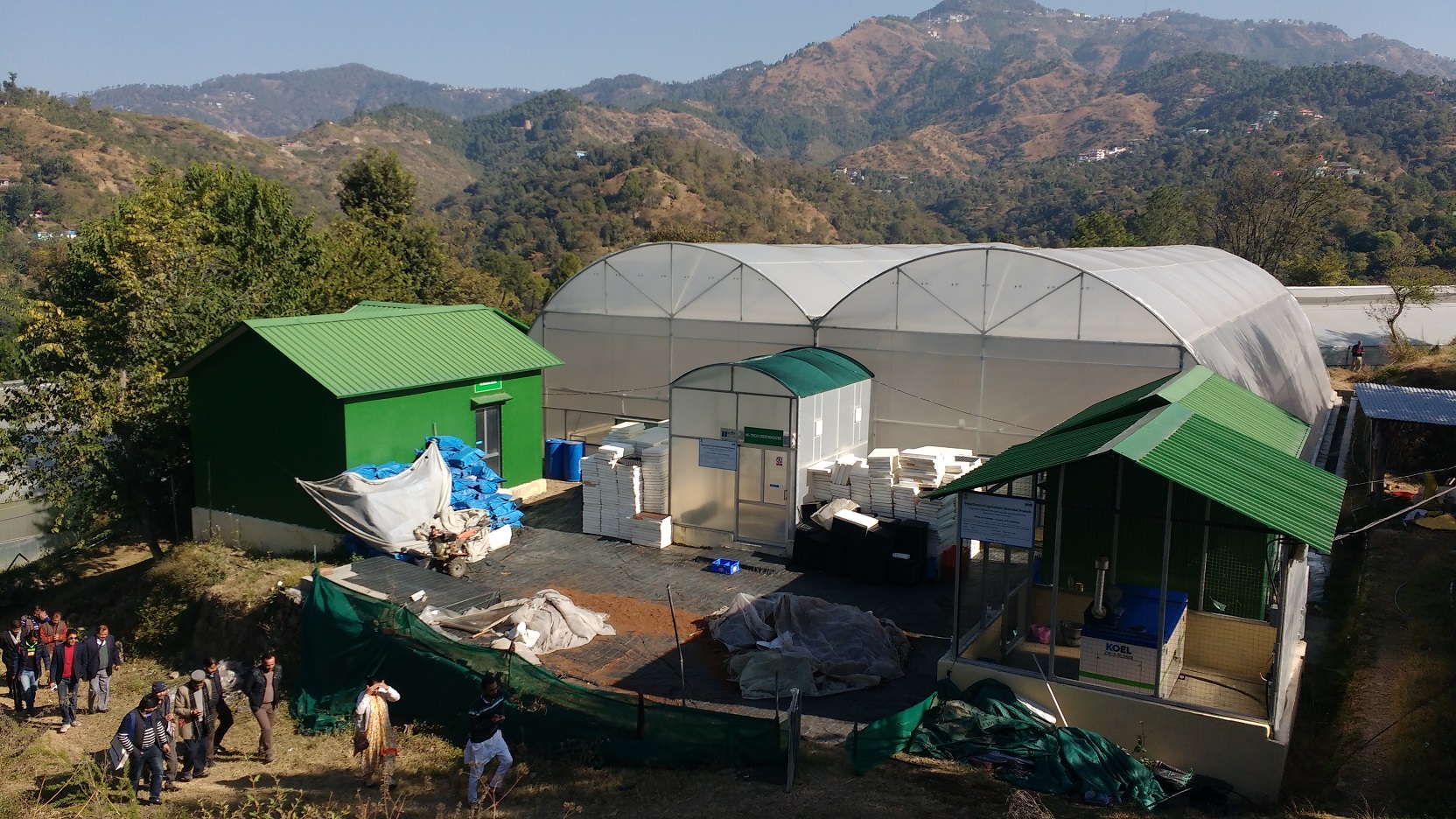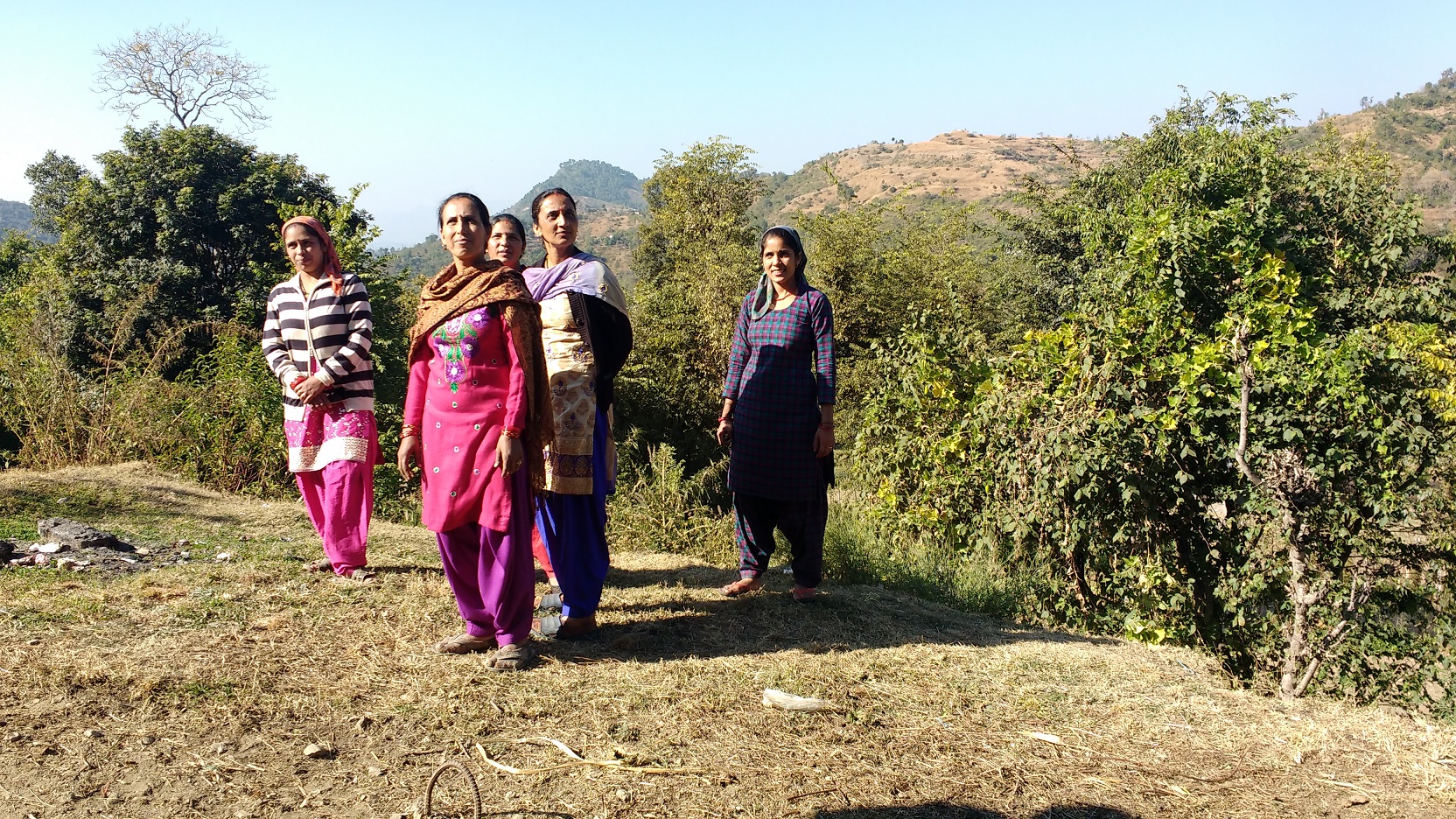This Himachal Community Not Only Tackled Crop Failure, but Raised a Bumper Crop!
They were able to reap huge profits by combining traditional skills with modern technology.

Climate change is affecting farmers across the globe and leading to massive crop failures. However, here’s an example of how a community in rural Himachal Pradesh has not just tackled climate change head-on but used traditional skills combined with modern technology to reap huge profits from crop diversification and switched to alternate crops in line with changed climatic patterns in the region.
The residents of Dhamoon and neighbouring villages in Shimla district have efficiently demonstrated how farmers can grow crops under controlled conditions, and adapt to climate change and erratic precipitation.

“A few decades ago, the villages in the area received at least one foot of snowfall every year and grew traditional crops like maize and wheat. However, snowfall eventually declined due to climate change, and the last snowfall was witnessed in 1991,” explained Ram Gopal Thakur, the president of Mahakali Flowers and Vegetable Growers Marketing Co-operative Society Ltd, Jubbarhatti.
“Weather variations, lack of snowfall and erratic rainfall led to massive crop failure in the area after that. In 2008, we switched to floriculture and growing exotic vegetables under control conditions with the help of Agriculture Department and the Department of Environment, Science and Technology. It has been a different story ever since,” said Thakur.
Also Read: How Innovative Agricultural Techniques Are Helping Farmers In Jharkhand Produce Bumper Crops
He said that organic farming and controlled cultivation of vegetables like seedless cucumber, red and yellow capsicum, iceberg, celery, soya, cauliflower, cabbage etc. led to a bumper harvest. “Last year, the department gave us a subsidy of around Rs 50 lakh to set up a hi-tech greenhouse for vegetable nursery production. With precision irrigation and controlled conditions inside the greenhouse, there is no danger from wild animals, and the crops are disease free.
The annual turnover of the society is now two crore rupees,” he explained. Thakur said that they sell the vegetables either locally or mostly in ‘Apni Mandis’ (farmers’ market) in Chandigarh.

Dr Suresh C Attri, Principal Scientific Officer, Department of Environment, Science and Technology, Govt of HP said that women form the backbone of agriculture in the area and are majorly responsible for the farms, as men are sometimes away for other occupations or jobs.
Thakur said that approximately 872600.3 square feet of land is under protected cultivation now and farmers in the area are doing well financially and have successfully adapted to climate change. He said that other villages in the cooperative include Baghi, Majdhari, Rampur, Keonthal and Chanog.
In the nearby Shilli village, women farmers have switched to organic farming of crops like tomatoes, cauliflower, cabbage, and turmeric successfully.

Kamlesh Thakur, a farmer, explained how she has revived the cultivation of red rice in the area. “The crop requires little water and is very nutritious. I got its seeds from Karsog and planted them this season. The revival of the traditional crop has begun. We have also grown white butter kidney beans, tangnu and koda which had become uncommon in the area,” she said.
Also Read: TBI Blogs: Farmers in Coastal Tamil Nadu Are Battling Drought Using Smart Farming Techniques
Guldavri Thakur, another resident, said that a group of more than 30 women were taken to Chandigarh and Dehradun for training in capacity building and climate-resilient agricultural practices by the Department of Environment, Science & Technology, Himachal Pradesh. “We have now diversified the crops and know how to protect them from diseases and wild animals. We are grateful to the government and hope that this revolution spreads throughout the state,” she said.
(This article was written by Gagandeep Singh. He is a freelance journalist who writes about environment, development, rural affairs and related issues.)
Like this story? Or have something to share? Write to us: [email protected], or connect with us on Facebook and Twitter.
NEW: Click here to get positive news on WhatsApp!
If you found our stories insightful, informative, or even just enjoyable, we invite you to consider making a voluntary payment to support the work we do at The Better India. Your contribution helps us continue producing quality content that educates, inspires, and drives positive change.
Choose one of the payment options below for your contribution-
By paying for the stories you value, you directly contribute to sustaining our efforts focused on making a difference in the world. Together, let’s ensure that impactful stories continue to be told and shared, enriching lives and communities alike.
Thank you for your support. Here are some frequently asked questions you might find helpful to know why you are contributing?


This story made me
-
97
-
121
-
89
-
167











